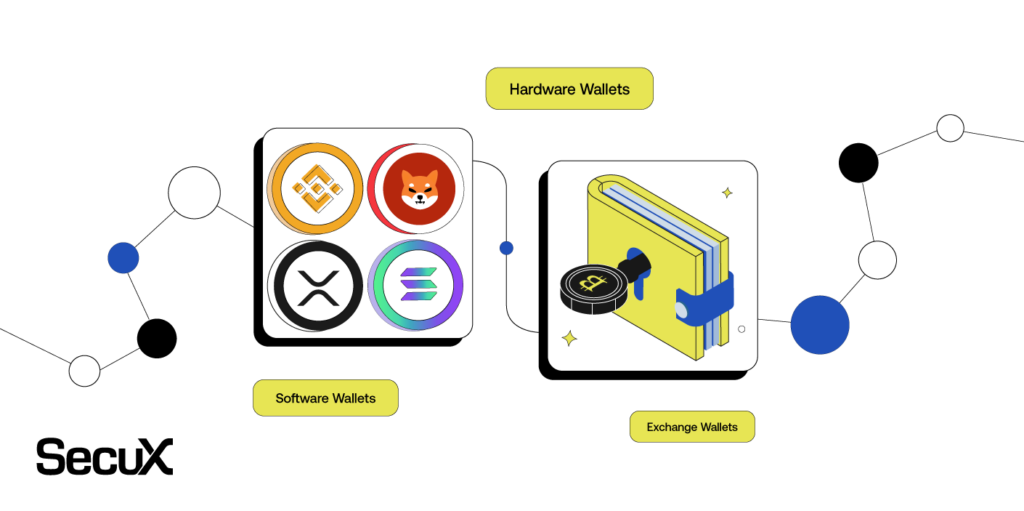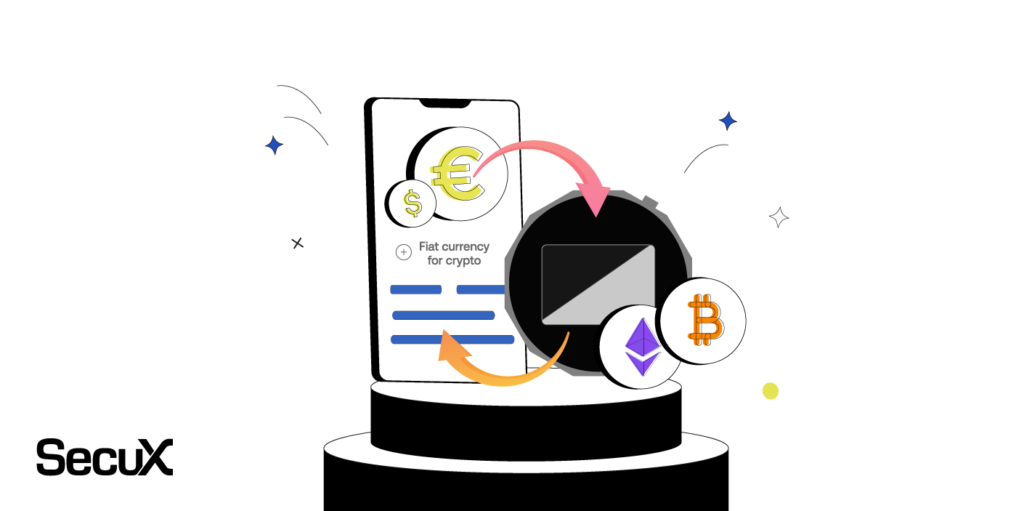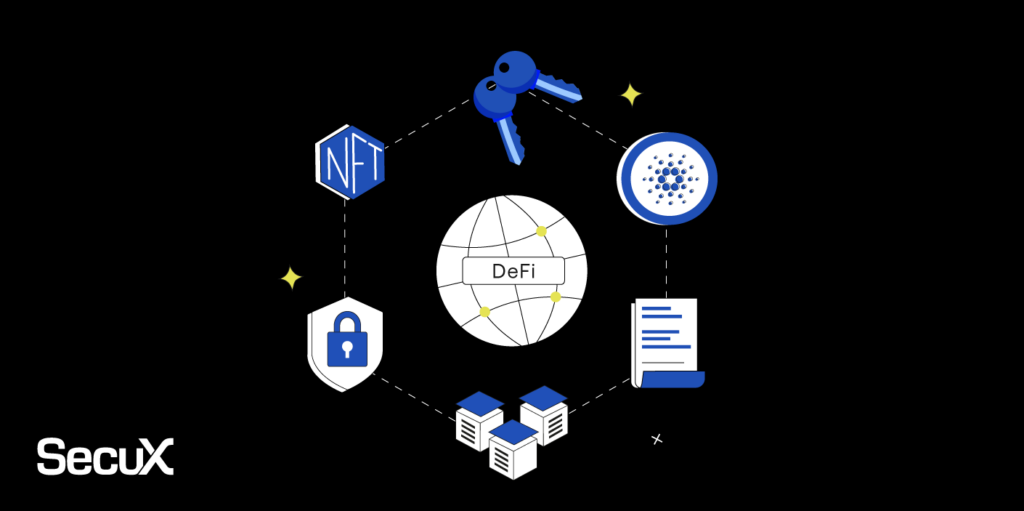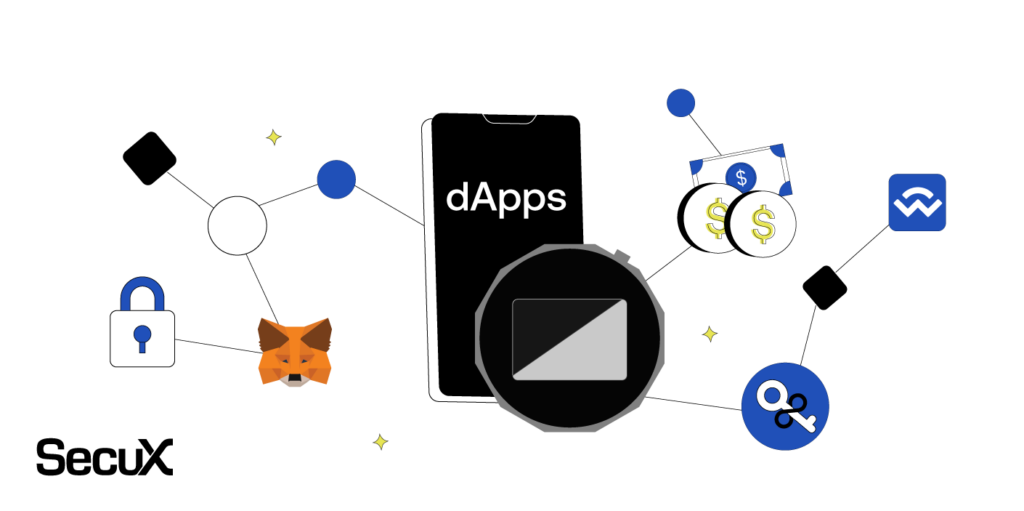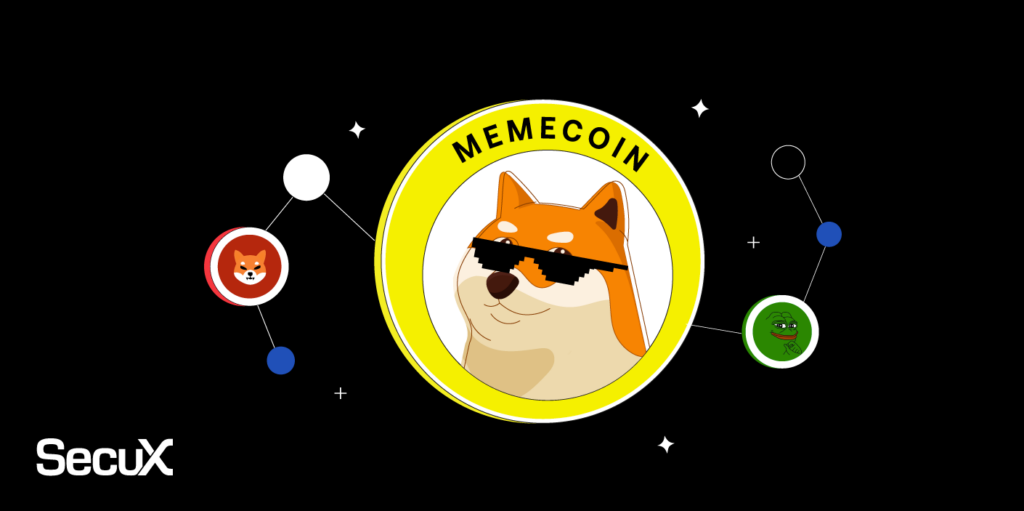
SecuX wallets support over 1,000 different types of coins and tokens on many different chains. But did you know there are differences between the two?
Coins
Coins refer to the native cryptocurrencies built on their independent blockchain network. For example, Bitcoin is powered by its native blockchain network. Similarly, Litecoin (LTC) and Ethereum (ETH) function on their respective blockchains. These blockchains may differ in their size, rules, miners, performance, etc. A coin is issued directly by the blockchain protocol on which it runs. In many cases, coins are not only used to pay transaction fees on the network, but are also used to incentivize users to keep the cryptocurrency’s network secure.
Some of the popular coins are Bitcoin (BTC), Ethereum (ETH), Binance (BNB), Dogecoin (DOGE), and Litecoin (LTC).
Token
Tokens, on the other hand, are units of value that blockchain-based organizations or projects that don’t have a blockchain network of their own but instead, develop on top of existing blockchain networks. While they often share deep compatibility with the coins of that network, they are a wholly different digital asset class.
Most tokens exist to be used with decentralized applications, or dApps. When developers are creating their token, they can decide how many units they want to make and where these new tokens will be sent when they are created. They will pay some of the native cryptocurrency on the blockchain they are creating the token on at this point.
Once created, tokens are often used to activate features of the application they were designed for. For example, Musicoin is a token that allows users to access different features of the Musicoin platform. This could be watching a music video or streaming a song. Binance (the exchange) also has its own token. When users trade with BNB (Binance coin), their fees are 50% less. Some tokens are created for a whole different kind of purpose: to represent a physical thing.
Examples
The Ethereum blockchain is home to many different tokens, with ether (ETH) being its native cryptocurrency. However, there are many other tokens that operate on the Ethereum network, collectively known as ERC-20 tokens. These tokens include popular cryptocurrencies like Tether USD (USDT), Shiba Inu (SHIB), Uniswap (UNI), and ChainLink (LINK).
If you are investing in these tokens, it’s important to keep them secure. A hardware wallet is one of the most secure ways to store your digital assets. A cold wallet, such as a hardware wallet, is a type of crypto wallet that stores private keys offline, making it less vulnerable to hacking and other security threats. This makes a hardware wallet an ideal solution for anyone who wants to keep their ERC-20 tokens safe and secure.
Similarly, the Binance Smart Chain also has its own native coin, Binance coin (BNB), which is used to power transactions on the network. There are many tokens that operate on the Binance Smart Chain, collectively known as BEP-20 tokens. Popular BEP-20 tokens include Binance USD (BUSD), PancakeSwap (CAKE), BakeryToken (BAKE), and Safemoon.
No matter which cryptocurrency or token you are investing in, it’s always important to keep your digital assets secure. A crypto wallet, such as a hardware wallet or cold wallet, is an essential tool for any investor. By storing your digital assets offline in a secure hardware wallet, you can have peace of mind knowing that your tokens are safe from potential security threats.
Smart Contract and NFTs
Smart Contracts
A “smart contract” is simply a program that runs on the Ethereum blockchain. It’s a collection of code and data that resides at a specific address on the Ethereum blockchain.
Smart contracts are a type of Ethereum account. This means they have a balance and they can send transactions over the network. However they’re not controlled by a user, instead they are deployed to the network and run as programmed. User accounts can then interact with a smart contract by submitting transactions that execute a function defined on the smart contract. Smart contracts can define rules, like a regular contract, and automatically enforce them via the code. Smart contracts can not be deleted by default, and interactions with them are irreversible.
Anyone can write a smart contract and deploy it to the network. You just need to learn how to code in a smart contract language, and have enough ETH to deploy your contract. Deploying a smart contract is technically a transaction, so you need to pay your Gas in the same way that you need to pay gas for a simple ETH transfer. Gas costs for contract deployment are far higher, however.
Essentially, Ethereum tokens are smart contracts that make use of the Ethereum blockchain.
Non-Fungible Tokens (NFTs)
Another type of token that also uses smart contracts is called non-fungible tokens, or also known as NFTs. NFTs are tokens that we can use to represent ownership of unique items. They let us tokenize things like art, collectibles, even real estate. They can only have one official owner at a time and they’re secured by the Ethereum blockchain – no one can modify the record of ownership or copy/paste a new NFT into existence.
An NFT is digitalized and coded the same way a token is. An NFT is also not duplicable and retains all of its transaction histories. You can tell who has owned that specific NFT and how many times it has been traded before. Because of that, you can easily prove if you created the NFT or if you are the current owner of the NFT. NFT can also be set up with royalties. If you are the creator of an NFT, you can receive royalties every time it gets traded in the future.
Benefits of a token
Since the developer of a dApp and token doesn’t have to create their own blockchain, it saves them time and resources. They can use the features of cryptocurrency with their application while benefiting from the security of the native blockchain.
Time isn’t the only thing it saves them. If they created their own blockchain and coin instead of a dApp and token, they would need to find miners to verify their transactions, too. It takes a lot of miners to create a strong blockchain that can’t be attacked. It makes much more sense for many computers to work on one shared blockchain that several applications can run on rather than there being thousands of weak, mostly-centralized blockchains. It’s a much longer, much more expensive process.
To see the complete list of coins and tokens supported by SecuX, please visit
https://secuxtech.com/supported-coins-tokens
